Teacher Guides
A House Divided: Civil War Photography
What can photographs of the Civil War tell us about the conflict and developments in the documentation of war?
This lesson plan looks at numerous aspects of the Civil War through period photography.
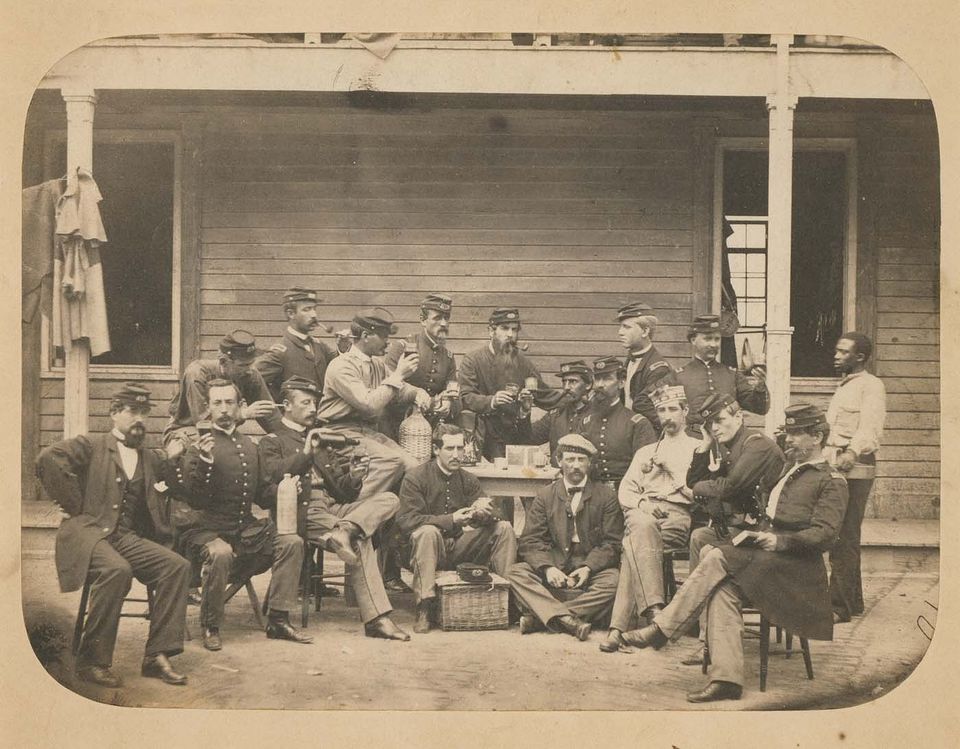
Egbert Guy Fowx, New York 7th Regiment Officers, ca. 1863, salted paper print
Primary Subject and Grade: U.S. History 5–12, Visual Arts 5–12
Components: Lesson Plan, Images, Student Activities
Standards: U.S. History Era 5: Civil War and Reconstruction (1860–1877).
Visual Arts K–12.6 Making Connections Between Visual Arts and Other Disciplines; K–12.4 Understanding the Visual Arts in Relation to History and Cultures; K–12.3 Choosing and Evaluating a Range of Subject Matter.
A House Divided: Reconstruction
How might history have been different if alternate plans for the Reconstruction of the South had been put into practice?
Political leaders and parties in the tense time after the Civil War proposed various plans for Reconstruction. By observing artwork of this period, students will learn how these plans affected the South (and North) and relationships between people of different races and geographic regions.
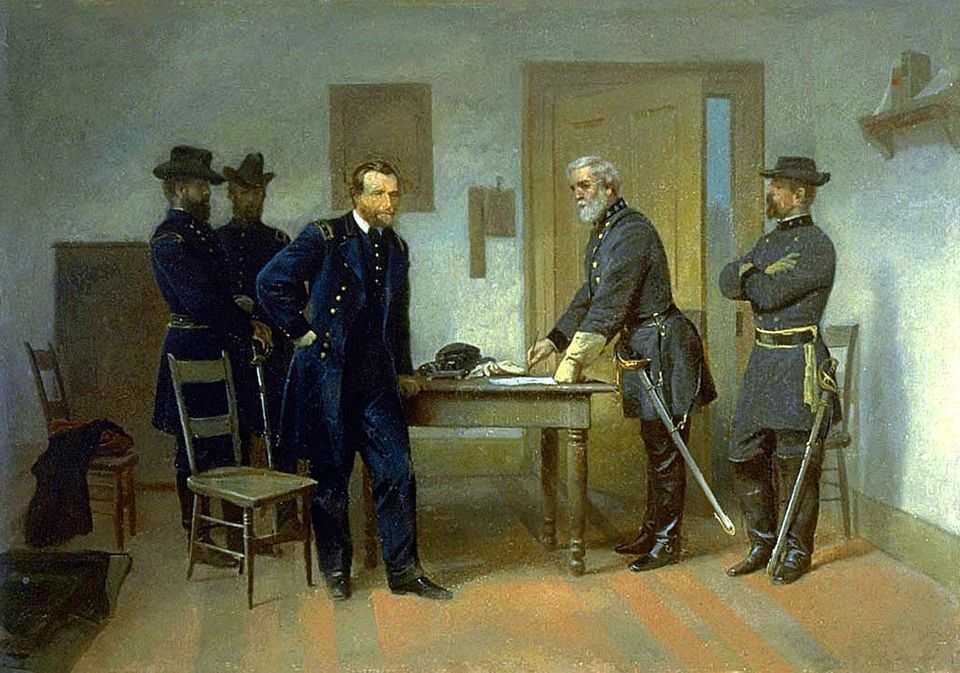
Alonzo Chappel, Lee Surrendering to Grant at Appomattox, ca. 1870, oil on paperboard
Primary Subject and Grade: U.S. History 8–12, Visual Arts 8–12
Components: Lesson Plan, Images, Student Activities
Standards: U.S. History Era 5: Civil War and Reconstruction (1860–1877).
Visual Arts K–12.6 Making Connections Between Visual Arts and Other Disciplines; K–12.4 Understanding the Visual Arts in Relation to History and Cultures; K–12.3 Choosing and Evaluating a Range of Subject Matter.
Bill Traylor: Perspective-Taking Within Historical Context
How can analysis of artworks created by Bill Traylor help students consider whose stories get told in history? How does our understanding of the past and the present change when we consider multiple perspectives?
This teaching resource prompts student inquiry into the artwork and life of Bill Traylor (ca. 1853-1949), a man born into slavery who lived his entire life in Alabama. The activities in this resource help students consider possible multiple readings of Traylor’s work and challenge students to question the perspectives and stories hidden within or missing from the telling of American history.
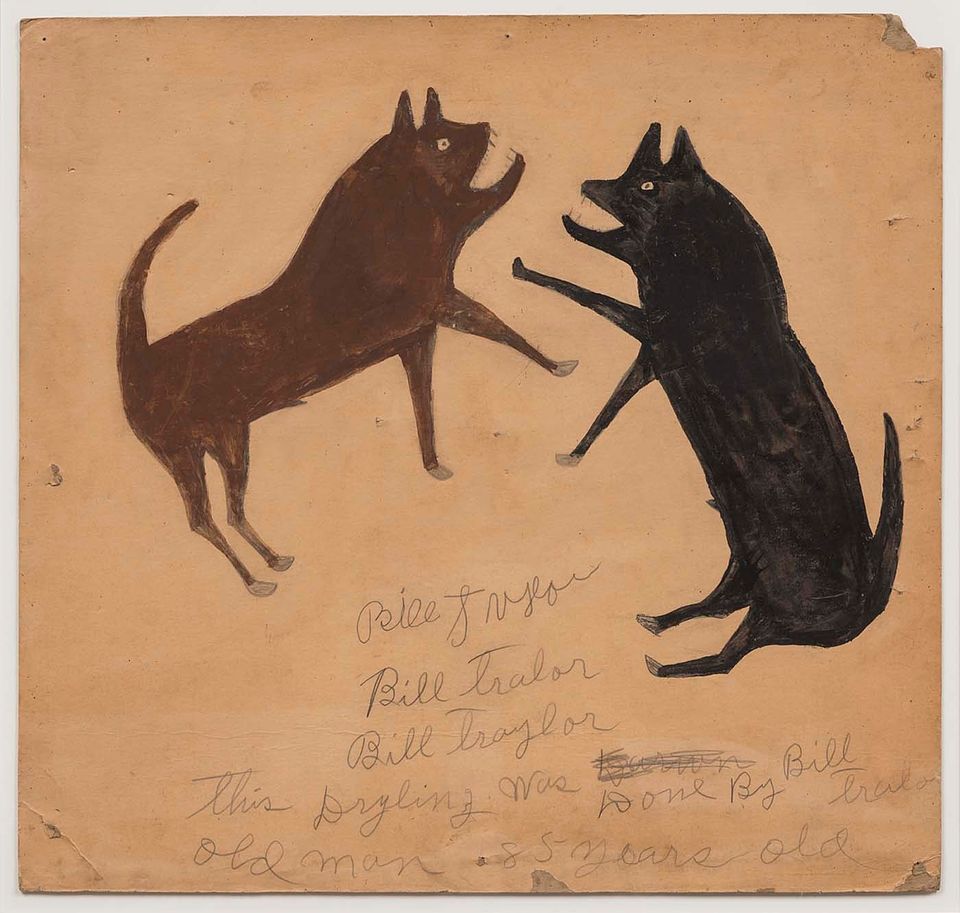
Bill Traylor, Untitled (Dog Fight with Writing), ca. 1939-1940, opaque watercolor and pencil on paperboard, Smithsonian American Art Museum
Primary Subject and Grade: Social Studies 7-12, Visual Arts 7-12
Secondary Subject: Language Arts
Components: Teacher Guide, Looking Questions
Standards: U.S. History Content Standards Era 5 (The Civil War and Reconstruction) through Era 8 (The Great Depression and World War II). The resource also supports the following Historical Thinking Standards: Historical Comprehension, Historical Analysis and Interpretation, Historical Research Capabilities.
The Civil War and American Art: Teacher Guide
What can American Art teach us about the transformative impact of the Civil War on the country?
This teacher guide provides background information, key images, activities, and lesson plans inspired by The Civil War and American Art exhibition that can be used either in conjunction with a museum visit or in the classroom.
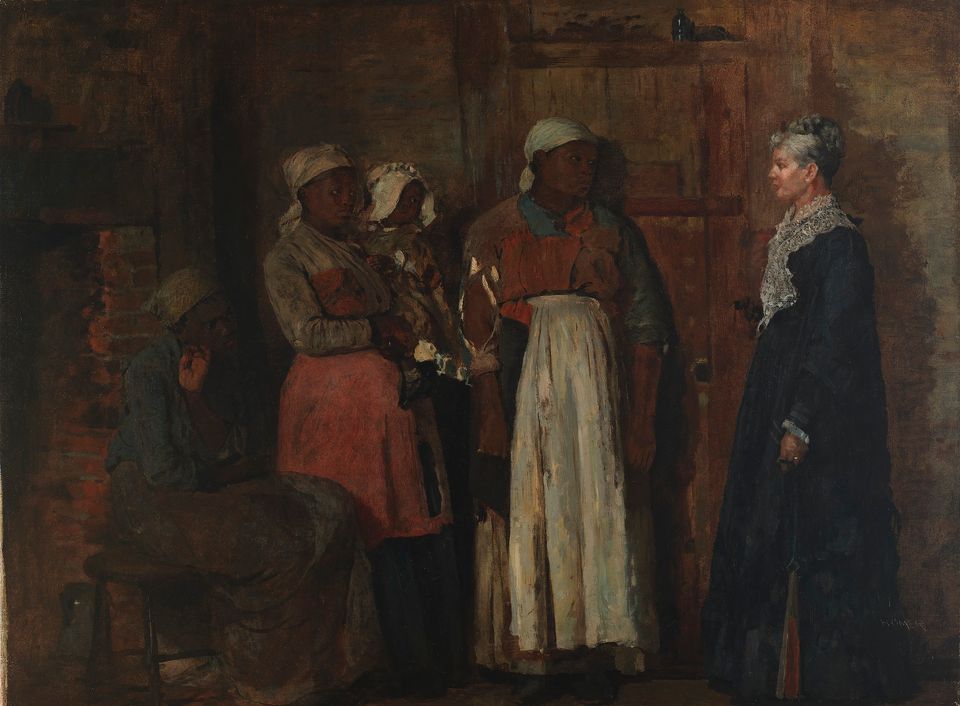
Winslow Homer, A Visit from the Old Mistress, 1876, oil on canvas, Smithsonian American Art Museum
Primary Subject and Grade: U.S. History 5–12, Visual Arts 5–12
Components: Lesson Plans
Standards: U.S. History Era 5 Civil War and Reconstruction (1860–1877).
Visual Arts K–12.6 Making Connections Between Visual Arts and Other Disciplines; K–12.4 Understanding the Visual Arts in Relation to History and Cultures; K–12.3 Choosing and Evaluating a Range of Subject Matter.
Reading/Language Arts Cite specific textual evidence to support analysis of primary and secondary sources, connecting; Integrate and evaluate multiple sources of information presented in diverse formats and media (e.g., visually, quantitatively, as well as in words) in order to address a question or solve a problem; Integrate information from diverse sources, both primary and secondary, into a coherent understanding of an idea or event, noting discrepancies among sources.
Envisioning Manifest Destiny
What did Manifest Destiny mean to the United States? How did Native Americans and African-Americans fit into Westward Expansion?
This lesson plan compares Emanuel Leutze's 1861 study of Westward the Course of Empire Takes its Way to the final mural in the United States House of Representatives. Analysis of the artwork and the changes made to the final version teach the history of Westward Expansion and Manifest Destiny.
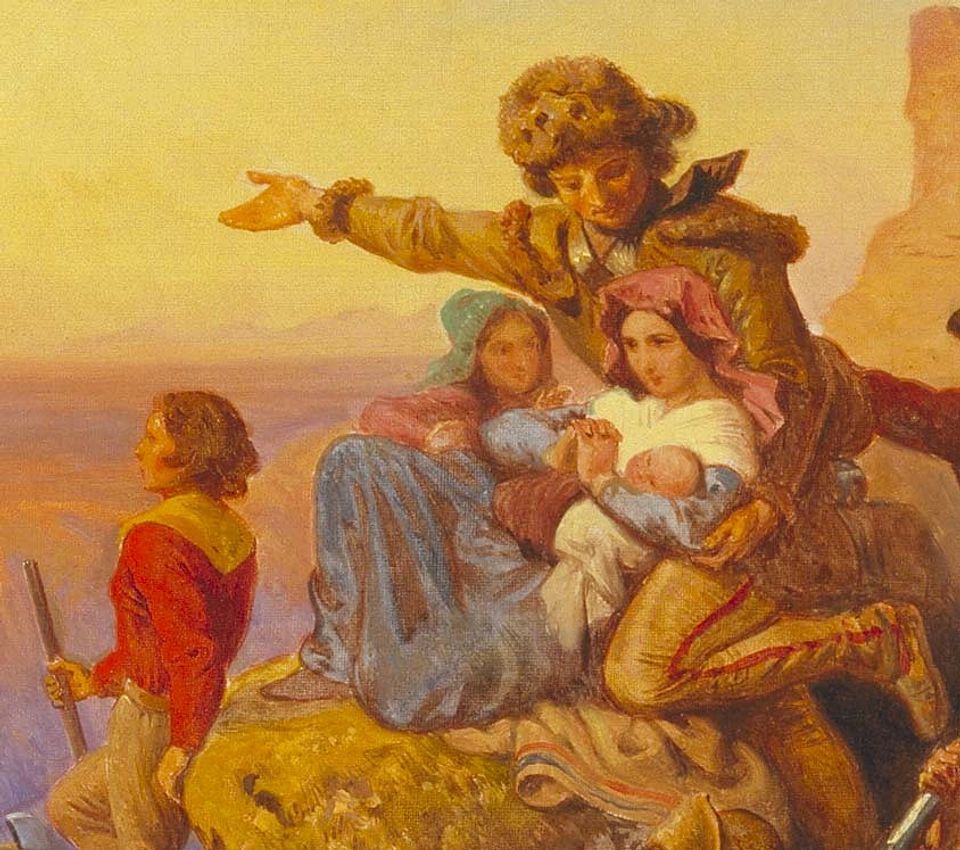
Emanuel Gottlieb Leutze, Westward the Course of Empire Takes Its Way (mural study, U.S. Capitol), 1861, oil on canvas
Primary Subject and Grade: U.S. History 5–12, Visual Arts 5–12
Components: Lesson Plan- Student Activity Suggestions, Historical Background, Interpretation Activities
Standards: U.S. History K–12.5 Era 5 Expansion and Reform (1800–1861).
Visual Arts K–12.6 Making Connections Between Visual Arts and Other Disciplines; K–12.4 Understanding the Visual Arts in relation to history and cultures; K–12.3 Choosing and evaluating a range of subject matter, symbols, and ideas; K–12.1 understanding and applying media, techniques, and processes.
Federalism to Jacksonian Democracy
What can American landscapes and other paintings tell us about the evolution of democracy in the United States?
This portion of the Land and Landscape module focuses on the influence of land ownership and the evolution of American civic ideas through landscape.

George Catlin, River Bluffs, 1320 Miles above St. Louis, 1832, oil on canvas
Primary Subject and Grade: U.S. History 5–12, Visual Arts 5–12
Secondary Subject and Grade: Civics K–12
Components: Visual Analysis guide, Historical Background information, images, activity suggestions
Standards: Visual Arts K–12.6 Making Connections Between Visual Arts and Other Disciplines; K–12.4 Understanding the Visual Arts in Relation to History and Cultures; K–12.3 Choosing and Evaluating a Range of Subject Matter.
U.S. History Era 2: Colonization and Settlement (1585–1763); Era 3 Revolution and the New Nation (1754–1820s); Era 4 Expansion and Reform (1801–1861).
Civics
George Catlin & His Indian Gallery
What can George Catlin's artworks and other primary sources reveal about the natives of the Great Plains and their interaction with nineteenth-century white culture?
This information-packed teacher guide incorporates numerous primary sources that complement the artworks and writings of George Catlin and detail his interaction with the Native Americans of the Great Plains.
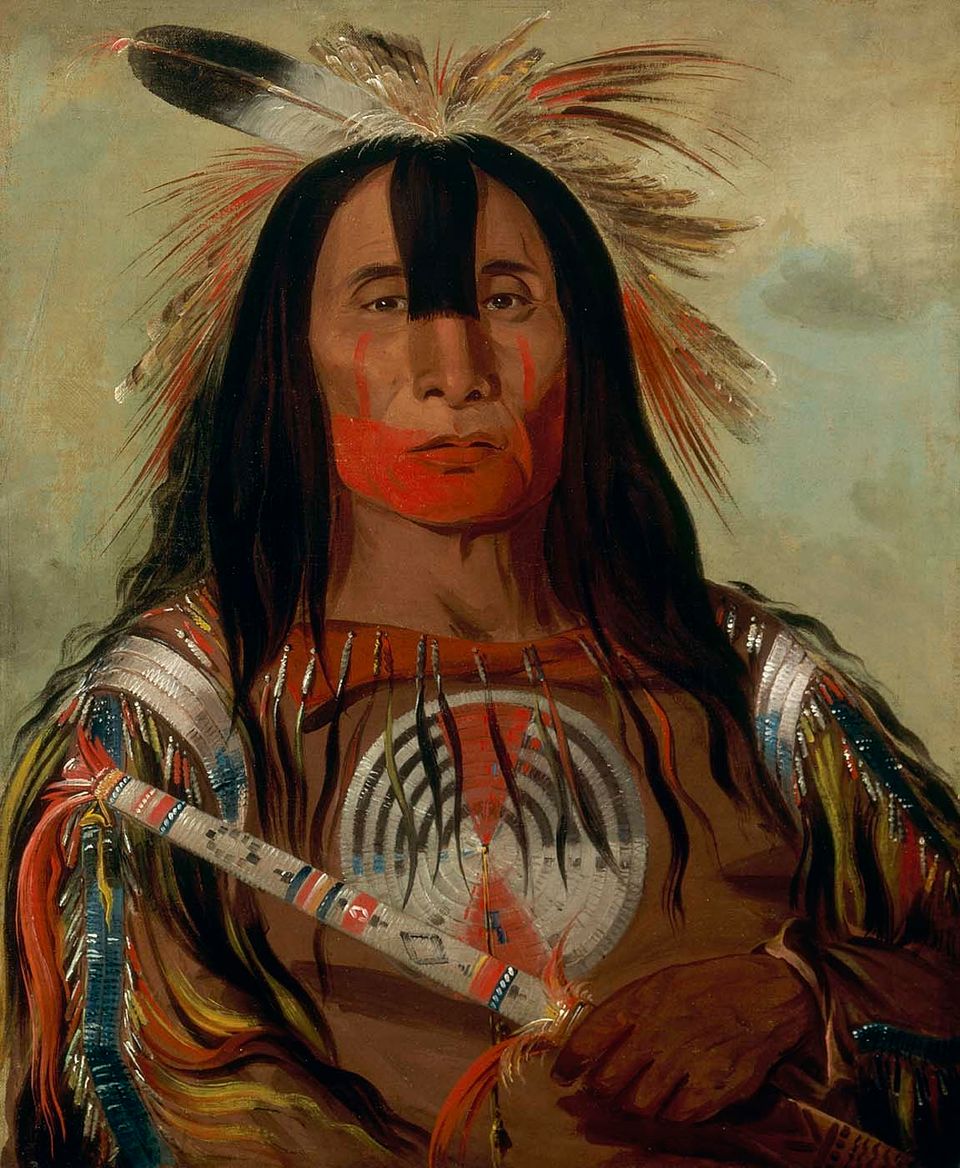
George Catlin, Stu-mick-o-súcks, Buffalo Bull's Back Fat, Head Chief, Blood Tribe, 1832, oil on canvas
Primary Subject and Grade: Visual Arts 5–12, U.S. History 5–12
Components: Lesson Plans
Standards: Visual Arts K–12.6 Making Connections Between Visual Arts and Other Disciplines; K–12.4 Understanding the Visual Arts in Relation to History and Cultures; K–12.3 Choosing and Evaluating a Range of Subject Matter.
U.S. History Era 5 Expansion and Reform (1800–1861).
Harlem Heroes
What do Carl Van Vechten's photographs from the 1930s tell us about the New Negro Movement as well as the causes and effects of the Harlem Renaissance?
This teacher guide provides contextual information, key images, and discussion questions to accompany the exhibition Harlem Heroes: Photographs by Carl Van Vechten. Topics include some of the debates among Black thinkers, writers, and historians in the definition and articulation of Black identity and history as part of the New Negro Movement.
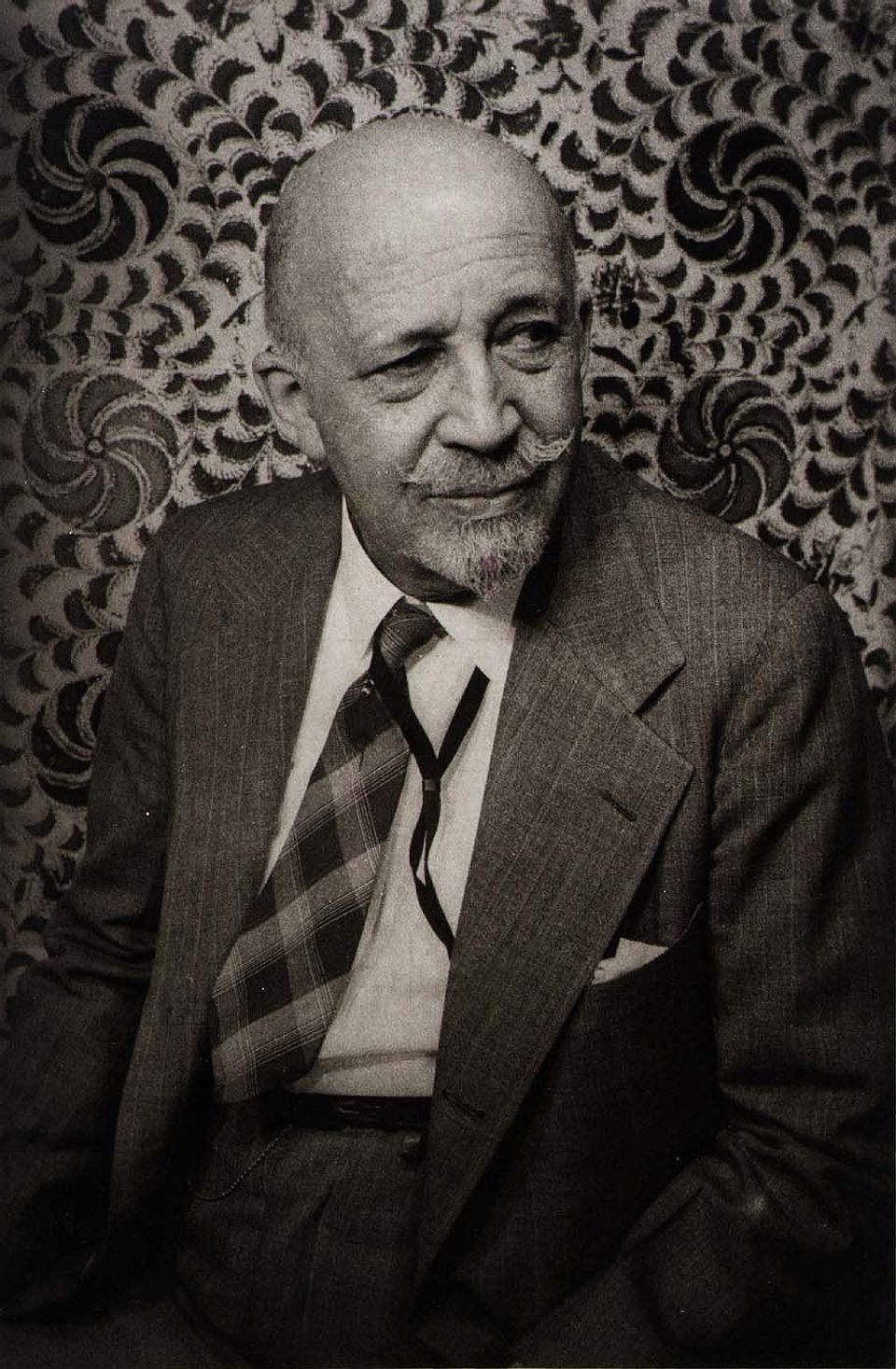
Carl Van Vechten, Richard Benson, W.E.B. DuBois, from the portfolio 'O, Write My Name': American Portraits, Harlem Heroes, 1936, printed 1983, photogravure
Primary Subject and Grade: 5-12 Social Studies, Language Arts, Visual Arts
Secondary Subject and Grade: Music
Components: Teacher Guide, Looking Questions
Standards: In addition to addressing U.S. History Content Standards' Era 7, this teaching resource supports the following Historical Thinking Standards:
- Historical Comprehension
- Historical Analysis and Interpretation
- Historical Research Capabilities
Learning To Look
How can we look deeper to get more meaning out of visual images?
This basic visual literacy activity takes students through ways to look at selected images with the idea that they can begin to construct meaning from images and artworks.
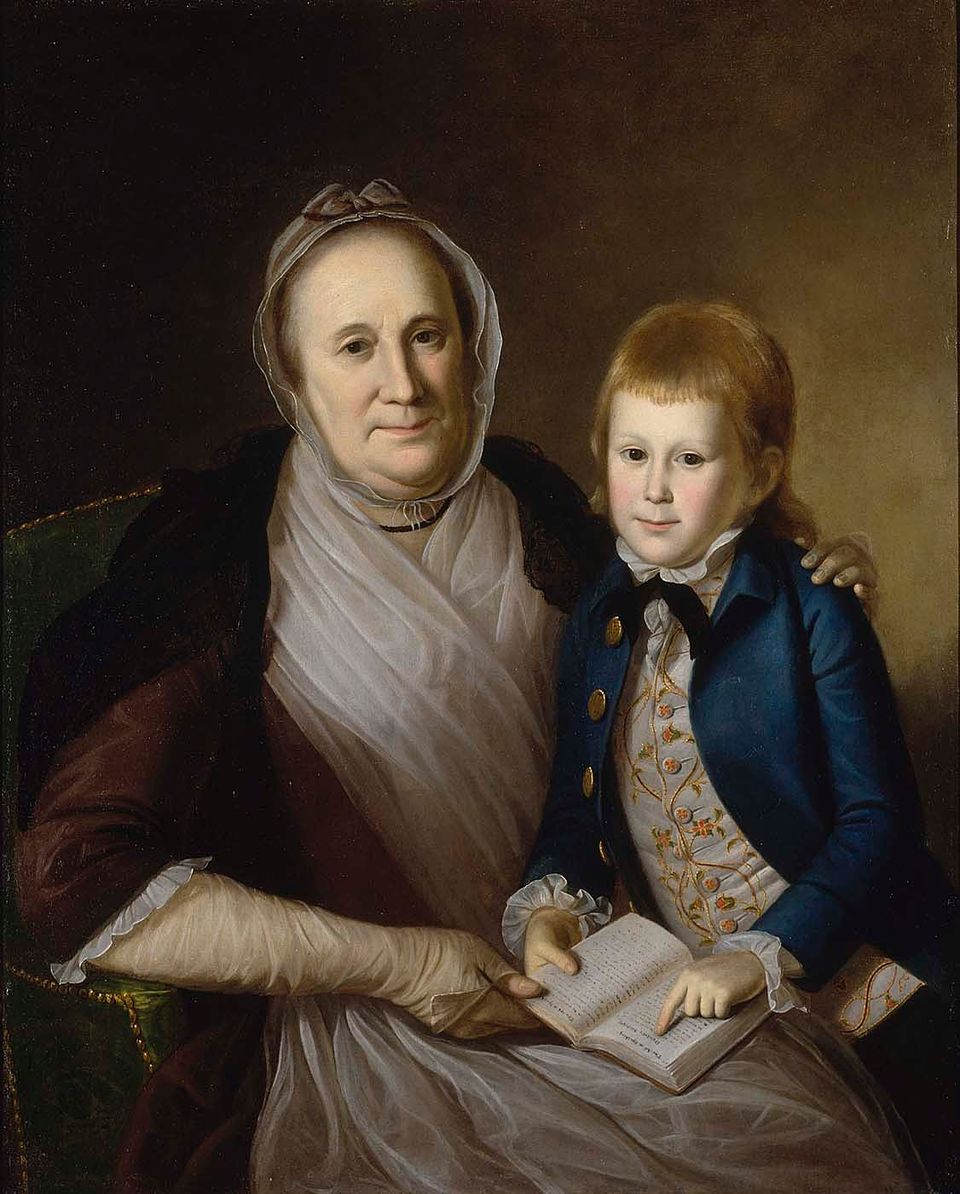
Charles Willson Peale, Mrs. James Smith and Grandson, 1776, oil on canvas
Primary Subject and Grade: 5-12 Social Studies, Language Arts, Visual Arts
Components: Teacher Guide, Classroom Activity
Standards: Visual Arts K–12.1 Understanding and Applying Media, Techniques, and Processes; K–12.2 Using Knowledge of Structures and Functions; K–12.5 Reflecting upon and assessing the characteristics and merits of their work and the work of others; K–12.6 Making Connections Between Visual Arts and Other Disciplines.
Performing Arts K–12.2 Acting by Assuming Roles and Interacting in Improvisations; K–12.6 Comparing and Connecting Art Forms by Describing Theatre, Dramatic Media (such as film, television, and electronic media), and other art forms.
Posters to Go
What can a work of art reveal about a period of American history?
This set of fifteen teaching posters features selected artworks from the Smithsonian American Art Museum, National Portrait Gallery, and Archives of American Art on five historical themes.
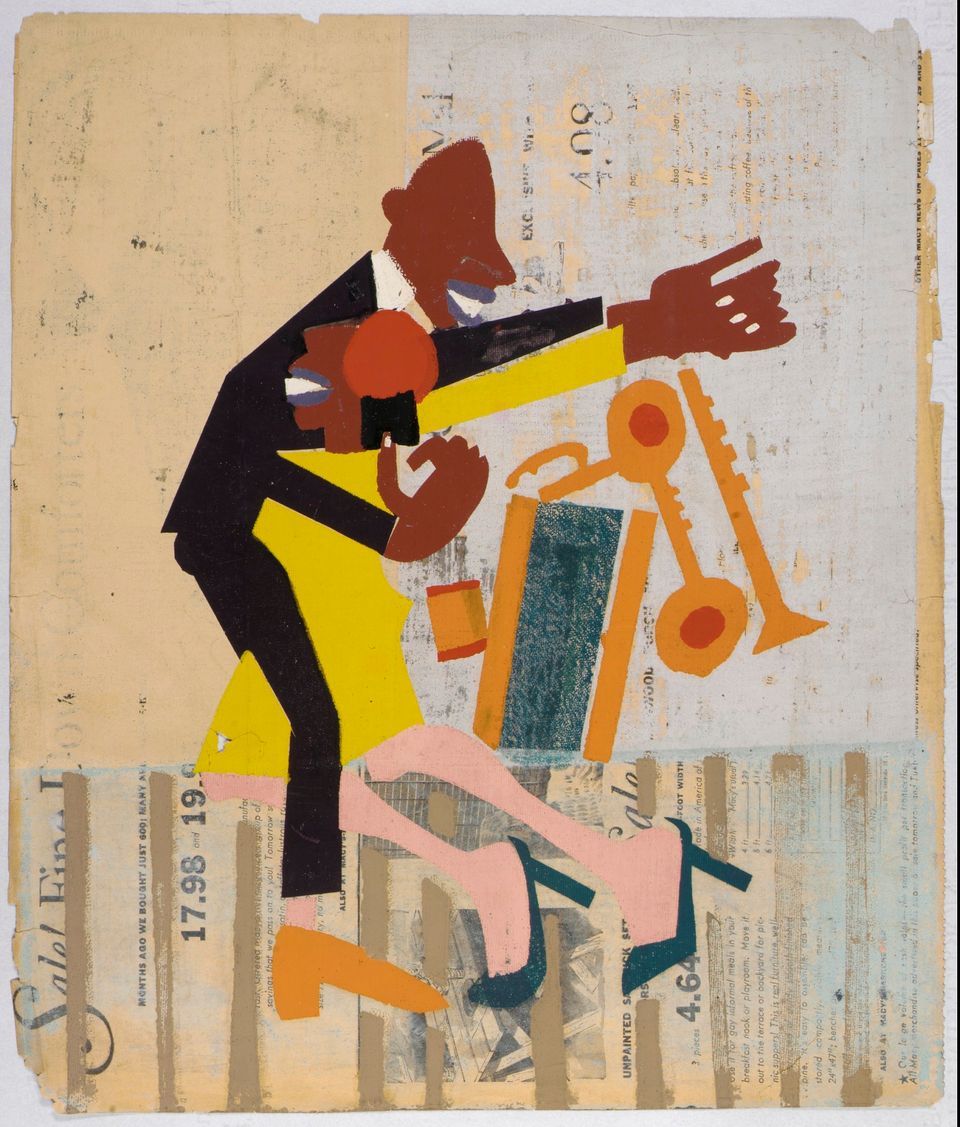
William H. Johnson, Jitterbugs (II), ca. 1941, screenprint on newspaper
Primary Subject and Grade: 5-12 U.S. History, 5-12 Visual Arts
Components: Images, Student Activities, Artist Bios
Standards: U.S. History Era 4: Expansion and Reform (1801– 1861); Era 5: Civil War and Reconstruction (1860–1877); Era 7 The Emergence of Modern America (1890–1930); Era 8 The Great Depression and World War II (1929–1945).
Visual Arts K–12.6 Making Connections Between Visual Arts and Other Disciplines; K–12.4 Understanding the Visual Arts in relation to History and Cultures; K–12.3 Choosing and Evaluating a Range of Subject Matter, Symbols, and Ideas.
Telling Stories: Norman Rockwell
How does Norman Rockwell tell a story in a single frame?
This teacher guide provides background information, key images, and lesson plans that can be used either in conjunction with a museum visit or in the classroom.
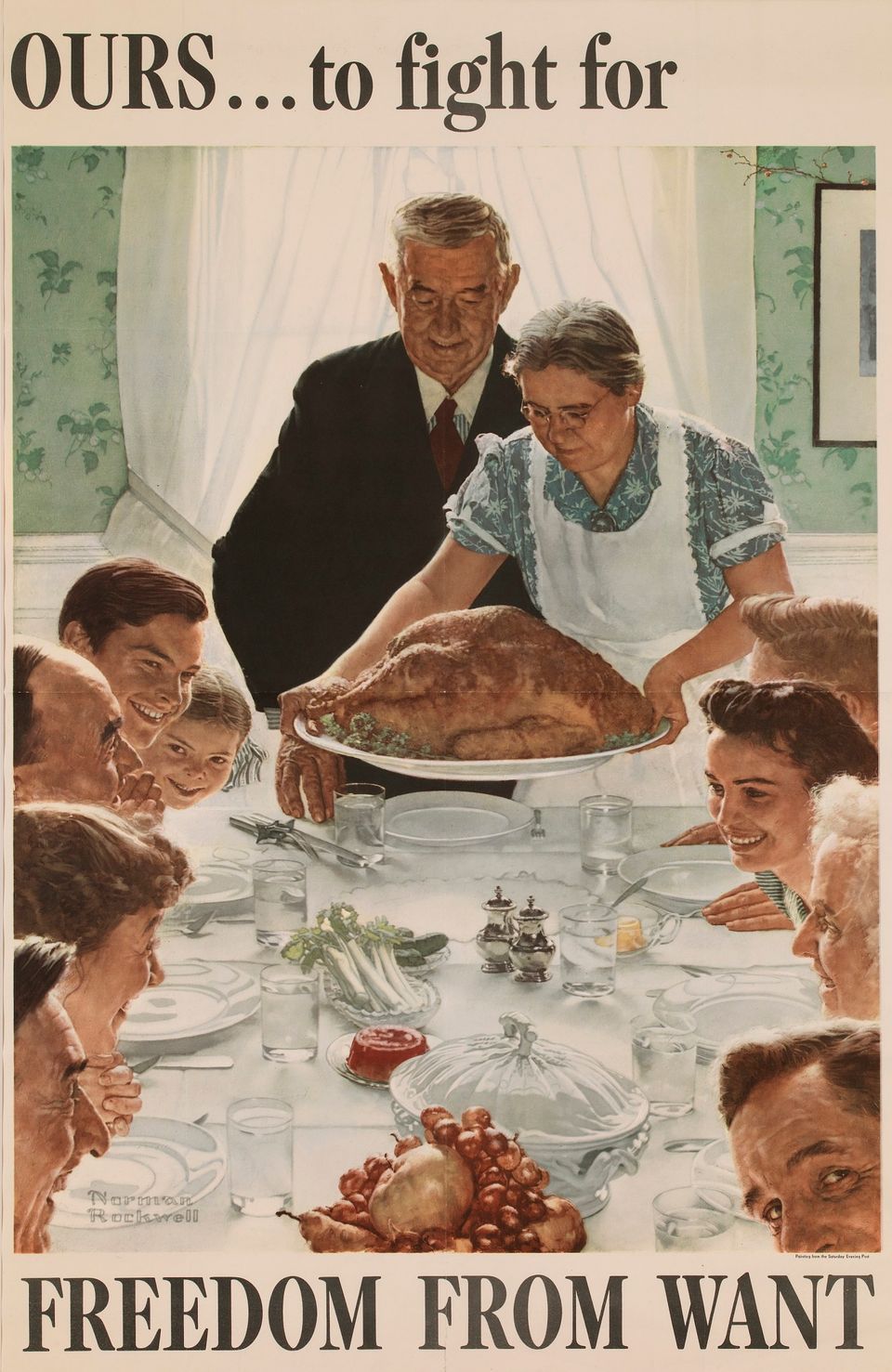
Norman Rockwell, Freedom from Want, 1943, offset color lithograph on paper
Primary Subject and Grade: U.S. History 512, Visual Arts 512, Language Arts 5-12
Components: Lesson Plan, Images, Student Activities, Background Information
Standards: U.S. History Era 7: The Emergence of Modern America (1890-1930); Era 8: The Great Depression and World War II (1929-1945): Era 9 Postwar United States (1945 to early 1970s).
Visual Arts K–12.6 Making Connections Between Visual Arts and Other Disciplines; K–12.4 Understanding the Visual Arts in Relation to History and Cultures; K–12.3 Choosing and Evaluating a Range of Subject Matter.
Language Arts K12.1 Students read a wide range of print and non-print texts to build an understanding of texts, of themselves, and of the cultures of the United States and the world.; K12.3 Students apply a wide range of strategies to comprehend, interpret, evaluate, and appreciate texts.
Download Artworks (PDF) featured in the Telling Stories: Norman Rockwell Teacher Guide
Young America: George Washington Lesson
What can we learn about leadership from writings about and images of George Washington?
During and after the American Revolution, as the new nation was struggling to define itself, George Washington emerged as a leader. Although he expressed reluctance to enter public life, he played a significant role in setting precedents for the infant government. In this lesson, students use a combination of artwork, everyday objects, and primary sources to learn about George Washington’s life and leadership.
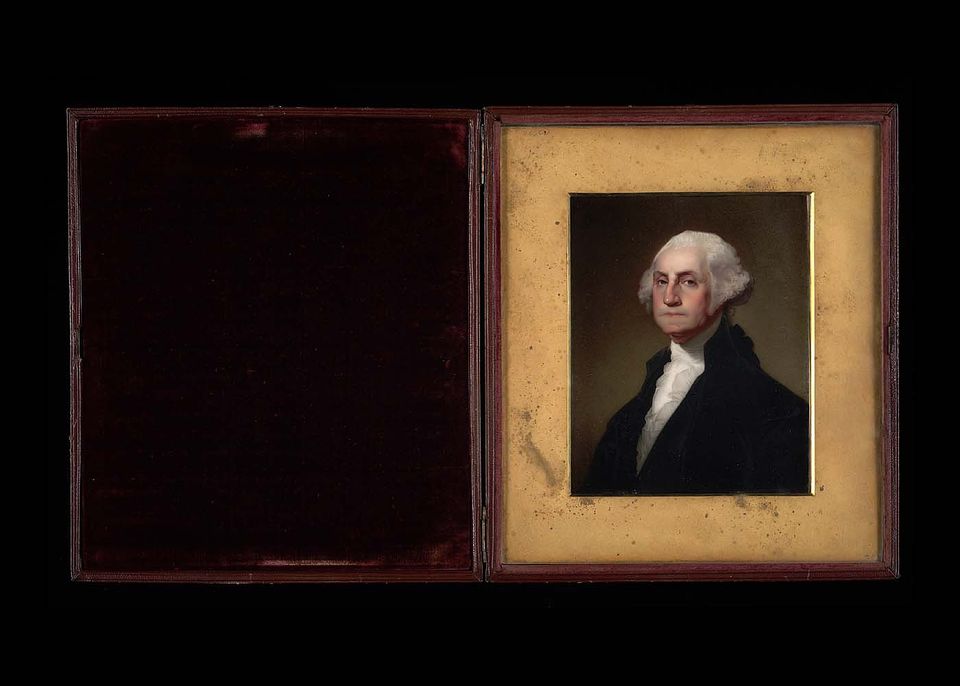
Henry Brintnell Bounetheau, Gilbert Stuart, George Washington, ca. 1845, watercolor on ivory
Primary Subject and Grade: U.S. History 5–12, Visual Arts K–12
Components: Lesson Plan, Annotated Images, Student Activity
Standards: U.S. History Era 3: Revolution and the New Nation (1754–1820s).
Visual Arts K–12.6 Making Connections Between Visual Arts and Other Disciplines; K–12.4 Understanding the Visual Arts in Relation to History and Cultures; K–12.3 Choosing and Evaluating a Range of Subject Matter.
Videos
Superman, World War II, and Japanese-American Experience
Born in Seattle in 1939, artist Roger Shimomura and his family were sent to an incarceration camp for Japanese Americans during World War II. Shimomura’s Dairy paintings are based on the entries in the personal diary of his grandmother, Toku Shimomura. The entry that inspired Diary: December 12, 1941 was written five days after the attack on Pearl Harbor.
For more education resources related to Diary: December 12, 1941, visit The American Experience in the Classroom.
American Resilience and the Great Depression
Tenement Flats depicts the Bunker Hill neighborhood of downtown Los Angeles during the Great Depression and was created as part of the Public Works of Art Project, a government program that supported artists under the New Deal.
What's in a Map? Reading the United 'States'
Jaune Quick-to-See Smith’s work challenges our notions of heritage, identity, and history. In State Names, the state names with European origins have been removed, and the only words left visible on the map are those that stem from indigenous sources.
The Painting That Inspired a National Park
Artist Thomas Moran accompanied the first federally funded geological survey to Yellowstone to help document and explore features of the region. Just one year later, Yellowstone National Park would become the first national park in the United States.
For more education resources related to The Grand Canyon of the Yellowstone, visit The American Experience in the Classroom.
Envisioning Manifest Destiny during the Civil War
Full of symbolism and allegorical vignettes from Moses and the “promised land” to an American “Madonna” dressed in red, white, and blue, Emmanuel Leutze's Westward the Course of Empire Takes Its Way (mural study, U.S. Capitol) was created during one of the most tumultuous times in U.S. history: the onset of the Civil War.
For more education resources related to Leutze's mural study, visit The American Experience in the Classroom.
A Heavenly Omen and the Civil War
In this episode of SAAM's award-winning web series Re:Frame, join host Melissa as she crisscrosses the Smithsonian to learn about the connection between the Civil War and Frederick Church'sAurora Borealis (1865).
Through the Barbed Wire: Domingo Ulloa’s Braceros
Domingo Ulloa's Braceros depicts of a group of guest workers brought to the United States from Mexico to fill in agricultural labor shortages caused by World War II and encourages viewers to think about the conditions in which the men lived and worked.
Art as Allegory: A Godlike George Washington
Constantino Brumidi's study for the massive painting on the ceiling in the rotunda of the United States Capitol is steeped in history and mythology, from George Washington being depicted as Zeus to Jefferson Davis being vanquished by Athena.
More Resources
Explore American History through American Art

Alexandre Hogue, Dust Bowl, 1933, oil on canvas, Smithsonian American Art Museum, Gift of International Business Machines Corporation, 1969.123
Examine artworks in the context of important eras and events in U.S. history, from the 1700s through the present day, with our education resource The American Experience in the Classroom.
Explore the Civil Rights Movement through American Art
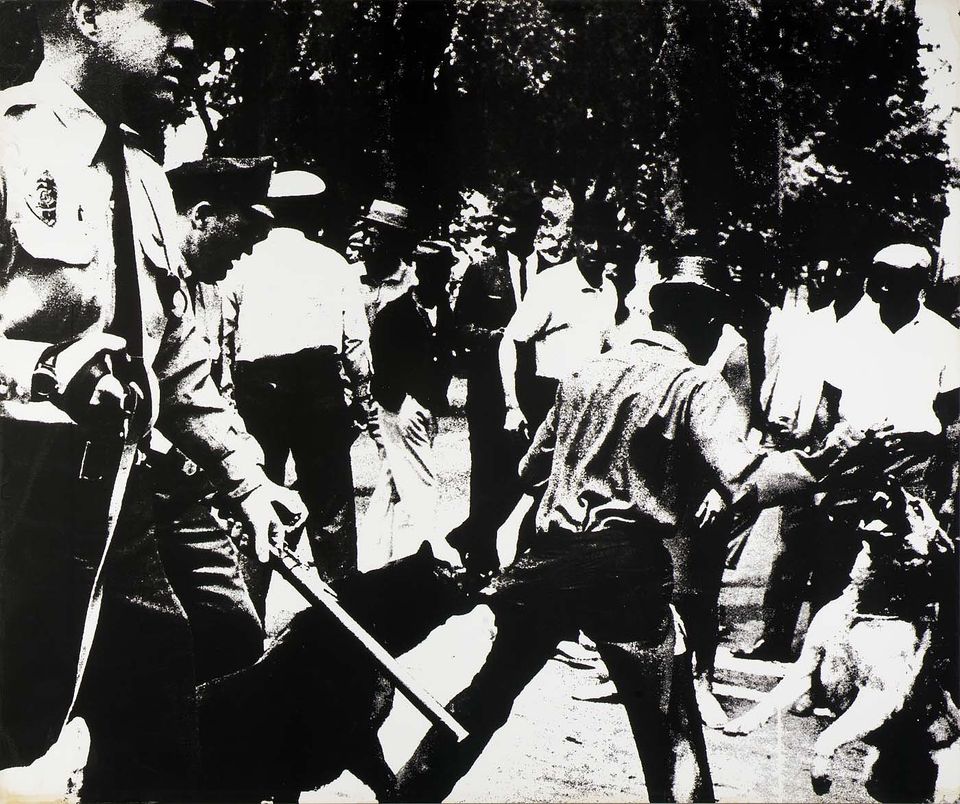
Andy Warhol, Untitled (Birmingham, Alabama), from the portfolio Ten Works x Ten Painters, 1964, screenprint, Smithsonian American Art Museum, Gift of Adelyn D. Breeskin, 1967.13.5
Discover the history, influence, and legacy of the Civil Rights movement by exploring more than three dozen artworks from the collections of the Smithsonian American Art Museum and the Smithsonian National Museum of African American History and Culture.
Westward Expansion
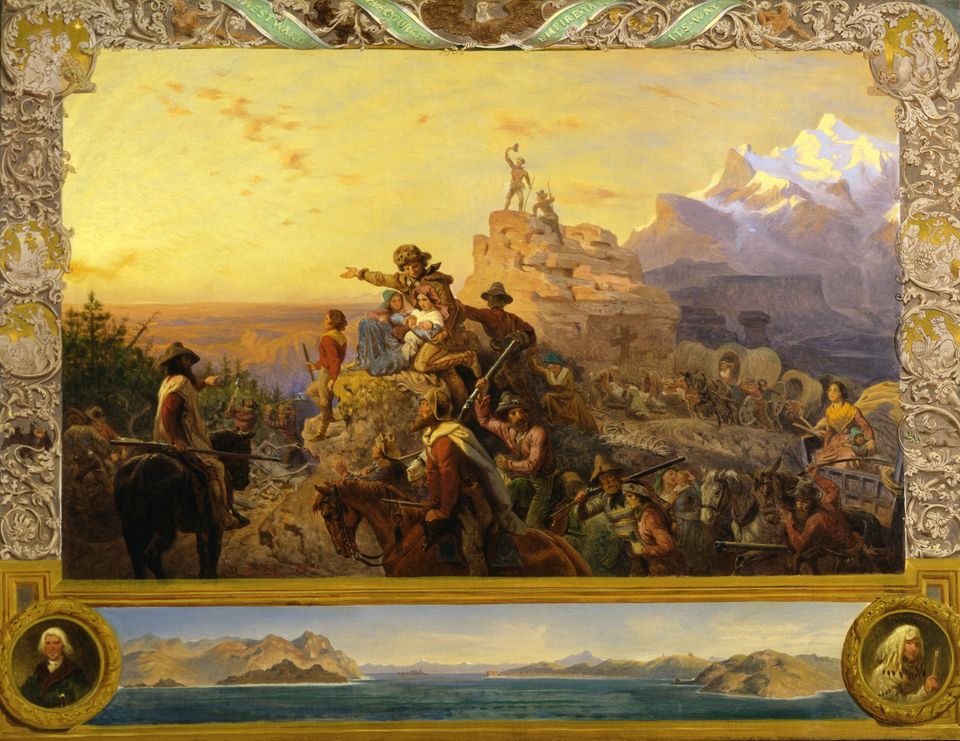
Emanuel Gottlieb Leutze, Westward the Course of Empire Takes Its Way (mural study, U.S. Capitol), 1861, oil on canvas, Smithsonian American Art Museum, Bequest of Sara Carr Upton, 1931.6.1
This distance learning lesson plan invites students (8th grade) to use an artwork to support their analysis as they examine American identity in light of the story of westward expansion.













